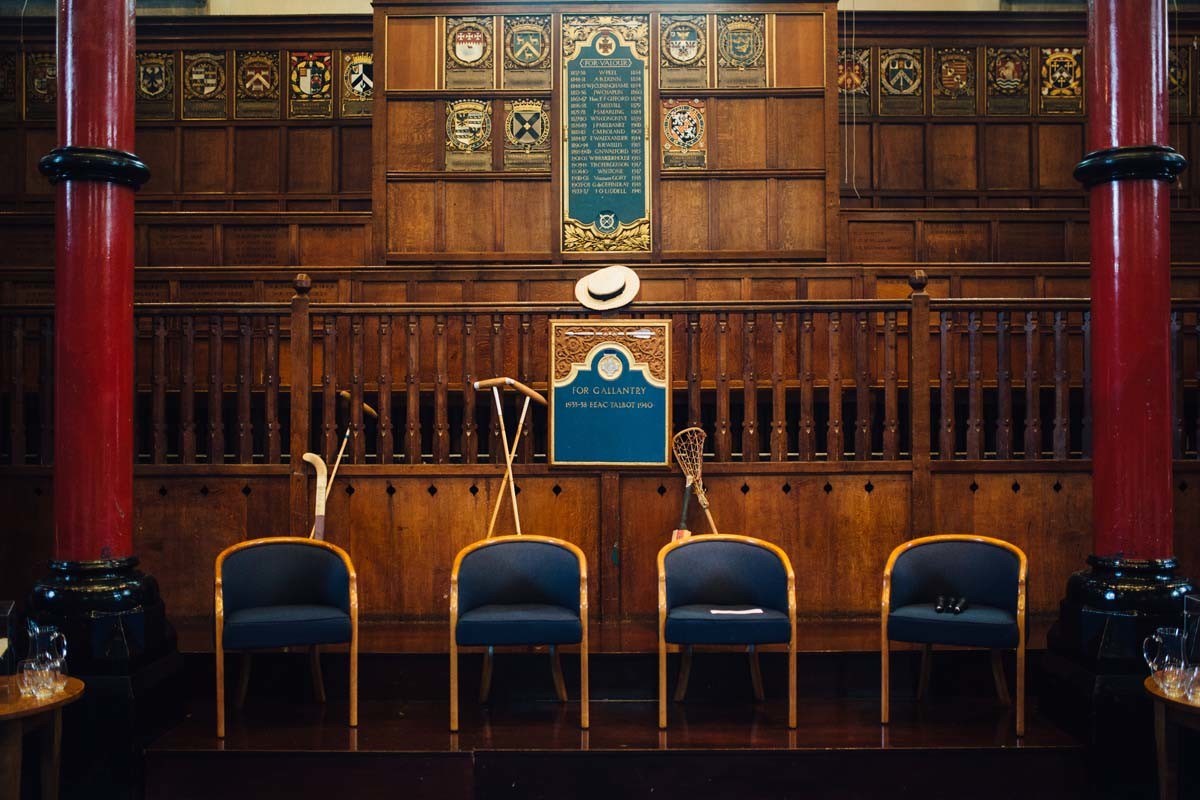
25 Nov Harrow at a Glance
Harrow School was founded in 1572 under a Royal Charter granted by Queen Elizabeth I. The School is located in a leafy, 324-acre estate, encompassing much of Harrow on the Hill in north-west London.
Harrow’s extensive site comprises six conservation areas, a registered park, a nine-hole golf course and even a working farm. Coupled with its buildings of special architectural and historic interest, the School truly has the quality of a small village. There is a real community spirit among the pupils, teachers and support staff, and Harrow can only be described as an inclusive and diverse place to work.
Over 800 Harrovians are full-time boarders, living in one of 12 boarding Houses during term time. Teachers and their families also live on the Hill. There are approximately 70 boys living in each House, along with a residential House Master, Assistant House Master and Matron. There are no dormitories: a boy shares his room with a fellow pupil of the same age for the first year or two, and thereafter has a room to himself. It is very much his home for the term, where he keeps his belongings, puts up his pictures and gets some hard-earned sleep.
Harrow School has produced many great alumni, whom we call the Giants of Old. Famous Old Harrovians include statesmen such as Sir Robert Peel, Lord Palmerston, Sir Winston Churchill, first prime minister of India Jawaharlal Nehru and King Hussein of Jordan; writers including Lord Byron, Richard Sheridan, Anthony Trollope and Richard Curtis; Henry Fox Talbot, the inventor of photography; the archaeologist Sir Arthur Evans; James Bruce the explorer; and 19 winners of the Victoria Cross. More recently, many pupils have gone on to distinguished careers in business, the law, medicine, the armed forces, the arts and the media.
The School comprises a number of historic and modern buildings. Old Schools is the original school building and includes the Fourth Form Room, Harrow School’s original classroom. Building began in 1608 and was completed in 1615. The room is home to the carved autographs of Anthony Trollope, Sir Winston Churchill, Sir Robert Peel, Lord Byron and Richard Sheridan, some of the most famous Old Harrovians.
Another of Harrow’s iconic buildings is the Chapel, which was built in 1855 so that all boys could attend an Anglican church service. It is located next to the Vaughan Library: both buildings were designed by Sir George Gilbert Scott.
Speech Room is Harrow School’s main assembly hall. Built in 1877, Speech Room seats over 800 Harrow boys for the Head Master’s meeting each Monday morning. It is also where the School sings its unique Songs, holds orchestral and choral events, and, of course, an annual Shakespeare play.
The Alex Fitch Room is one of the most majestic at Harrow School. Located in the War Memorial building, the entire contents of the room are older than the building itself. This beautiful room was donated by the Fitch family in memory of their son Alex, an Old Harrovian who died in the First World War.
The Alex Fitch Room is decorated with intricate and beautiful panelling from the Elizabethan period. The fireplace dates from the reign of Henry V and the floor is made of decking from the battleship H.M.S. Vincent, which served during the reign of George III. The furniture of the room is from the reign of James I, as is the main dining table. Alex Fitch’s portrait hangs above the 600-year-old fireplace; the light above it is never being put out in a mark of respect for those who fall in war.
The final historic venue this blog post will look at is the War Memorial building. During the Great War, 647 Old Harrovians lost their lives. This had a traumatic effect on the School, and it decided to build a significant memorial commemorating those who had died. The War Memorial sits in the heart of Harrow School. The cabinet in the entrance of the building displays replicas of 19 Victoria Crosses. Portraits of Giants of Old line the grand staircases that lead up to the Old Harrovian Room, where Harrow teachers gather at breaktime, and where society lectures and guest speakers are hosted. Portraits of former Head Masters adorn the walls of the OH Room.
Harrow School welcomes over 10,000 visitors each year on specially arranged guided tours. Our guides live and breathe Harrow and are full of knowledge about the School. We offer two main types of tour: private groups of over 10 guests and public Open Tours, held on a Saturday four times a year. For more information or to book a guided tour of Harrow, head to the following page.
https://www.harrowschoolenterprises.com/tours/


